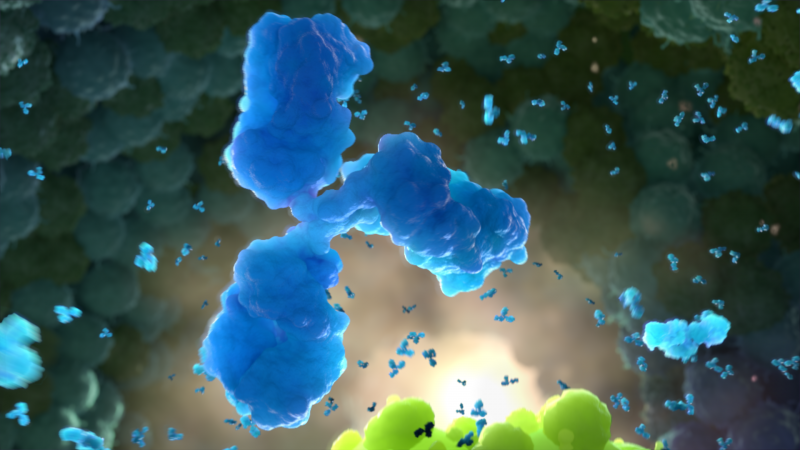Animation Expedition #1 - A Virus Attacks a Cell: How Does Infection Begin?

Through the tool of animation, we can go on a journey inside the human body.
Have you seen the 1966 movie Fantastic Voyage? It's based on a story by author Isaac Asimov. In Asimov's tale, a group of intrepid scientists shrink to the size of blood cells. The goal is to cure a tumor inside someone's brain. Of course, such a journey will remain in the realm of science fiction. Yet, you can get some idea of what such an adventure might feel like. "How's that?" you ask. Today, artists and scientists have combined forces to create an amazing view of the miniature world inside our bodies. Here we present an animation that takes you on a "fantastic voyage" to the beginning of infection.
View the animation A Virus Attacks a Cell
If you've ever had influenza (the "flu") you can now see what it might look like. We begin with a view of a tiny particle--the virus. Lung cells loom large. They make up the landscape through which the virus flies. The virus particle (called a virion) soon settles on the surface of a cell. The cell dwarfs the virion. But size is no defense. The tiny invader has the keys to unlock the cell's outer surface. The virion has molecules that match others on the cell surface. The virion unlocks the cell surface. It sinks within. And so infection begins.
Check Your Understanding Question
Assume in the video that the screen size of the virion (the virus particle) is 15 centimeters. An actual influenza virus particle is about 100 nanometers. What is the magnification of the virion shown on the screen?
Answer
First convert the measures so that they are the same units. It’s easier to convert centimeters to nanometers. Because of the magnitude of the difference, you want to use scientific notation.
- 1 cm = 10 mm
- 1 mm = 1,000,000 nm = 1 x 106 nm
- Therefore, 1 cm = 1 x 107 nm
- The virion image is 15 cm in diameter; therefore, the image is 15 x 107 nm or 1.5 x 108 nm
- Since the virion is 100 nm, the magnification is 1.5 x 108/100 = 1.5 x 106.
- 5 x 106 is 1,500,000
That is, the magnification you see on your computer screen shows the virion 1.5 million times bigger than the real virus. For practice with this exercise, show other ways in which you could work out the magnification scale.
This is the first in a series of postings highlighting our Vaccine Makers Project animations.

